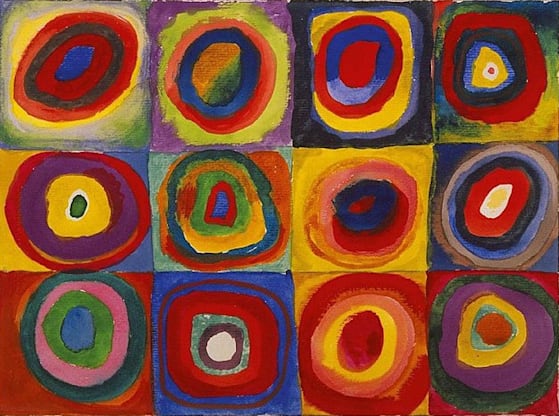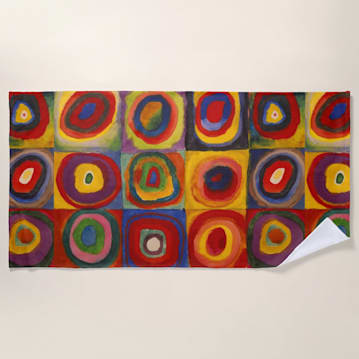Squares with Concentric Circles by Kandinsky
The Painting That Started Impressionism

"Squares with Concentric Circles" was painted by Wassily Kandinsky in 1913. It contributed heavily to the development of the abstract art movement. Kandinsky's "non-objective" style, characterized by the absence of recognizable objects or figures, helped define abstract art. The painting was produced toward the end of his "Improvisation" series, lasting from 1910 until 1914. It would ultimately become one of his most popular pieces.
Kandinsky believed that the circle represented the soul or spirit, while the square represented the material world. So, while the painting is pleasing to the eye through its color and shape contrasts, it has more meaning than you might think. This odd connection between colors, shapes, and emotions is what set Kandinsky's work apart from other artists.
The piece was first exhibited at the Erster Deutscher Herbstsalon in Berlin in 1913, and now reside at the Lenbachhaus Gallery in Munich, Germany.
About the "Squares with Concentric Circles" Painting
| Painting Name | Squares with Concentric Circles |
|---|---|
| Artist | Wassily Kandinsky |
| Paint Type | Watercolor |
| Year Completed | 1913 |
| Painting Period(s) | Expressionism, Abstract Art, Modern Art |
| Location it was Painted | Germany |
| Where it is Now | Lenbachhaus Gallery, Munich Germany |
| What it's Worth Now | Estimated at over $20 million |
| Interesting Facts |
|






